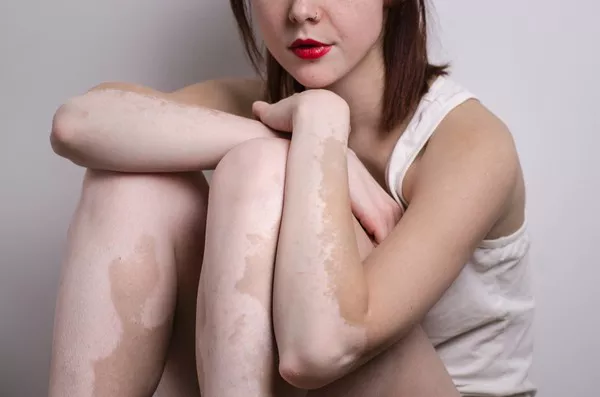Vitiligo is a skin condition that causes the loss of pigment, resulting in white patches on the skin. It occurs when melanocytes, the cells responsible for skin color, are destroyed. Phototherapy is one of the most common treatments for vitiligo. This article will explore what phototherapy is, how it works, its types, effectiveness, potential side effects, and more.
Understanding Phototherapy
Phototherapy involves using specific wavelengths of light to treat various skin conditions. For vitiligo, the goal is to stimulate the remaining melanocytes to produce more pigment. This process can help reduce the visibility of white patches on the skin.
Types of Phototherapy for Vitiligo
There are several types of phototherapy used to treat vitiligo. Each type has its own benefits and methods of application. Here are the most common forms:
1. Narrowband UVB Phototherapy
Narrowband UVB (NB-UVB) therapy is one of the most widely used treatments for vitiligo. It involves exposing the skin to a specific range of ultraviolet light. This treatment typically takes place in a doctor’s office or a specialized clinic.
How It Works
- Frequency: Treatments usually occur two to three times a week.
- Session Length: Each session lasts about 5 to 10 minutes.
- Effects: This therapy helps stimulate melanocyte production and can lead to repigmentation of the skin.
Advantages
- It is generally well-tolerated.
- Fewer side effects compared to other forms of phototherapy.
2. PUVA Therapy
PUVA stands for Psoralen and Ultraviolet A. This treatment combines a medication called psoralen with exposure to UVA light.
How It Works
- Pre-treatment: Patients take psoralen orally or apply it to the skin before treatment.
- Session Length: After taking psoralen, patients are exposed to UVA light for about 20 to 30 minutes.
Advantages
- PUVA may be more effective for widespread vitiligo.
- It can produce faster results compared to other treatments.
Disadvantages
- More side effects, including nausea from psoralen.
- Increased risk of skin cancer with long-term use.
3. Excimer Laser Therapy
Excimer laser therapy uses focused beams of UVB light to target specific areas of the skin.
How It Works
- Targeted Treatment: The laser can precisely focus on the white patches.
- Session Length: Sessions are usually short, lasting about 15 minutes.
Advantages
- Effective for localized vitiligo.
- Minimizes exposure to surrounding skin.
Disadvantages
- Can be expensive and may require multiple sessions.
- Availability may be limited in some areas.
Effectiveness of Phototherapy
The effectiveness of phototherapy for vitiligo can vary based on several factors:
1. Extent of Vitiligo
Localized Vitiligo: Phototherapy is often more effective for localized patches.
Generalized Vitiligo: It may take longer to see results in more widespread cases.
2. Skin Type
Fair-skinned individuals may respond better to treatment compared to those with darker skin.
3. Consistency of Treatment
Regular sessions are crucial for achieving the best results. Missing treatments can slow down progress.
4. Combination with Other Treatments
Phototherapy may be combined with topical treatments like corticosteroids or calcineurin inhibitors for better outcomes.
Potential Side Effects
While phototherapy is generally safe, it can have some side effects:
1. Skin Irritation
Redness, itching, and dryness are common after treatment. These symptoms usually subside quickly.
2. Increased Sensitivity to Sunlight
Treated skin may become more sensitive to sunlight, requiring patients to take precautions.
3. Risk of Skin Cancer
Long-term use of phototherapy, especially PUVA, may increase the risk of skin cancer. Regular check-ups are essential.
4. Pigmentation Changes
In some cases, treated areas may develop uneven pigmentation.
Preparing for Phototherapy
Before starting phototherapy, patients should have a thorough discussion with their dermatologist. Here are some things to consider:
1. Medical History
Inform the doctor about any pre-existing conditions or medications being taken.
2. Skin Examination
A complete examination helps determine the best treatment approach.
3. Setting Realistic Expectations
Patients should understand that results may take time and that not everyone responds the same way.
What to Expect During Treatment
1. Initial Visits
The first few visits may involve patch testing to gauge skin reaction to light.
2. Regular Monitoring
Dermatologists will monitor progress closely, adjusting treatment frequency and intensity as necessary.
3. Ongoing Support
Many clinics provide support groups or counseling to help patients cope with the emotional aspects of vitiligo.
Lifestyle Considerations
While undergoing phototherapy, patients can take certain steps to enhance their treatment:
1. Sun Protection
Use broad-spectrum sunscreen to protect treated areas from sunburn.
2. Skin Care Routine
Maintain a gentle skincare routine to prevent irritation.
3. Healthy Diet
A balanced diet can support overall skin health and well-being.
Conclusion
Phototherapy is a valuable treatment option for individuals with vitiligo. It aims to stimulate melanocyte activity and promote repigmentation. While the effectiveness may vary based on individual circumstances, many patients experience positive results with consistent treatment. Understanding the types of phototherapy, potential side effects, and lifestyle considerations can help patients make informed decisions about their skin health. As with any medical treatment, consulting with a qualified dermatologist is crucial for the best outcomes.
By taking an active role in their treatment journey, individuals with vitiligo can find hope and confidence in managing their skin condition.
Related topics:


























